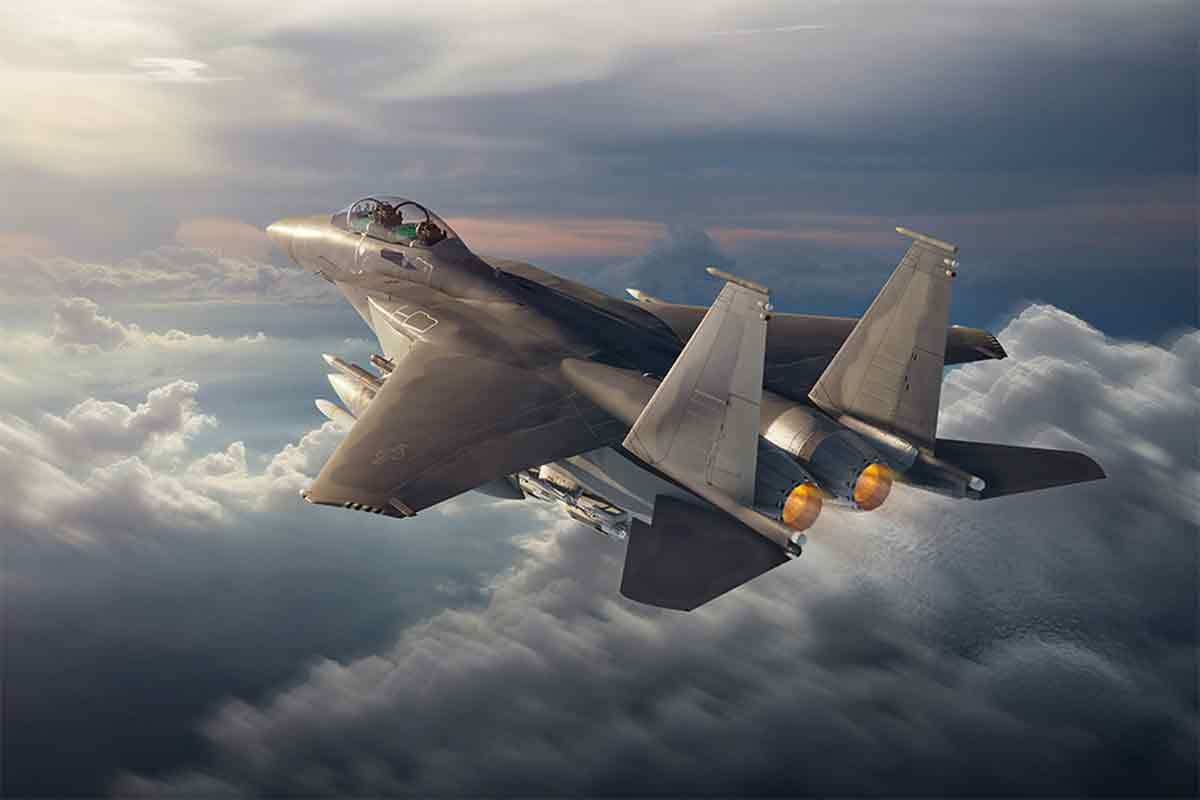It is doubtful if given the chance most pilots would turn down an opportunity to fly the Lockheed Martin F-35A over the Boeing F-15EX – but it isn’t the fighter jockeys who get to make the decision. In the end, it came down to budget, and the United States Air Force announced it would seek an additional dozen F-15EX fighters as part of the $4.2 billion unfunded priorities it submitted to Congress.
However, the service did not ask for any additional F-35A Lightning II fighters.
About $1.376 billion from the fiscal year 2022 (FY22) budget will go towards the twelve F-15EX fighters from Boeing, which will help narrow a projected gap the Air Force faced as it was retiring aging F-15C/D aircraft from its fleet. The additional funding for the F-15EX – which also included procurement of twenty-four conformal fuel tank sets and assorted spares to extend the range of the fighter – had ranked as a top priority for the service according to Defense News. The F-15EX funding accounted for the most expensive item on the annual unfunded priorities list.
What was far more notable was that the Air Force’s unfunded priority list didn’t include any additional F-35A fighters – a break from “tradition” as the FY20 and FY21 unfunded priority lists included a dozen F-35s each. Instead, the Air Force’s budget request only included the forty-eight F-35s – the same number requested in 2021. Congress had approved adding a dozen of the Lockheed Martin fifth-generation multi-role stealth fighters to last year’s request.
It is likely Congress will approve the F-15EX procurement, especially as the Air Force has sought to divest more than 200 aircraft in FY22 including forty-two A-10 Warthogs, forty-seven F-16C/Ds, and forty-eight F-15C/Ds.
The upgraded Boeing F-15EX, which is expected to have a structural life that could support the aircraft to serve through 2050, is far more than just an improved F-15. Described by the Air Force as a two-seat fighter with U.S.-only capabilities, the F-15EX was developed to be a next-generation variant of the combat-tested, 1980s-era F-15 fighter.
While still a fourth-generation aircraft, the F-15EX features newly adapted technologies and upgradeability, which could make it a viable, lethal, high-threat environment-capable attack platform. The F-15EX has also been upgraded with a modern suite of flight controls, computers, and defensive electronics, while it is also equipped with conformal fuel tanks and two additional weapon stations over the F-15C.
Sustainment Costs
Another point in the 2022 unfunded priorities list is that it does include $360 million for F-35 sustainment. That would allow the service to purchase twenty F-35 power modules and also to fund weapons systems sustainment for what has been described as “critical F-35 capability.”
According to Air Force Magazine, the list also included $825 million for other weapon system sustainment, including readiness spares, U-2 operations, and EC-37 spare engines. The Air Force also called for an additional $37 million for five additional spare engines for the EC-37 Compass Call prior to the production line shutdown – and the EC-37 is set to replace the legacy EC-130H Compass Call electronic warfare aircraft.
Other expenses in the budget request include $180 million for aircraft upgrades and technologies, including Advanced Synthetic Aperture Radar Systems, Adaptive Engine Transition Program, and Large Common Carriage development. The Air Force also sought some $736 million for military construction and an additional $320 million for facility sustainment, restoration, and modernization. However, no specific projects were highlighted.
Peter Suciu is a Michigan-based writer who has contributed to more than four dozen magazines, newspapers and websites. He regularly writes about military small arms, and is the author of several books on military headgear including A Gallery of Military Headdress, which is available on Amazon.com.

